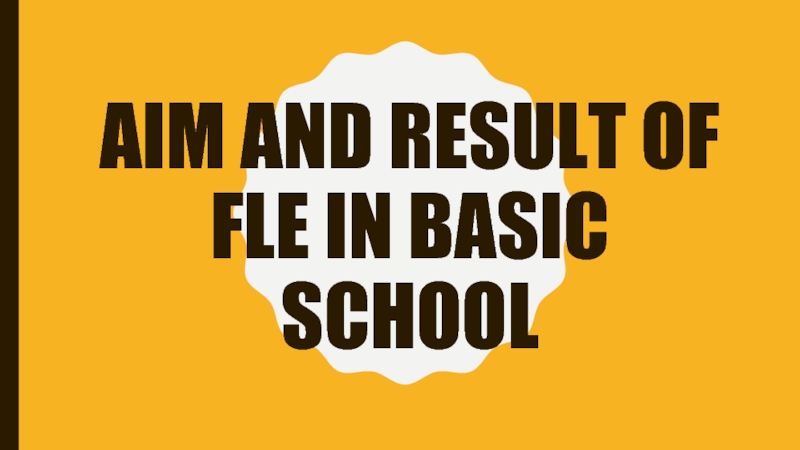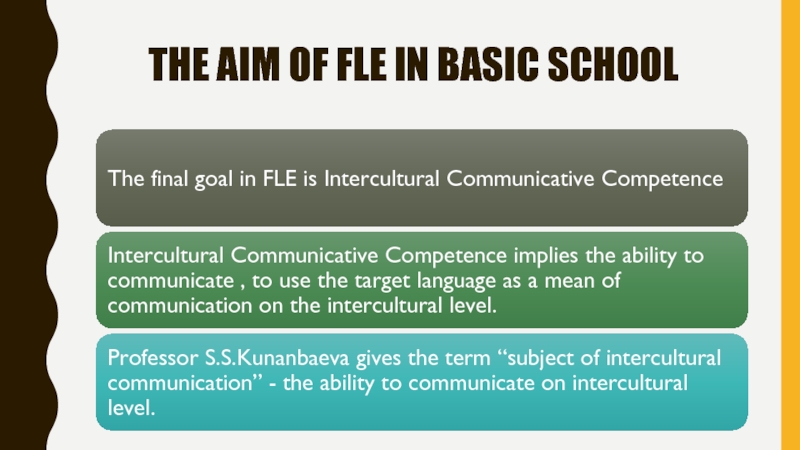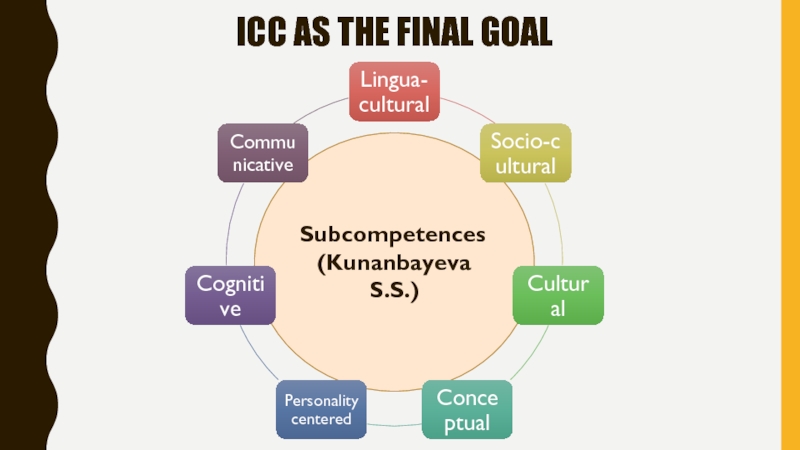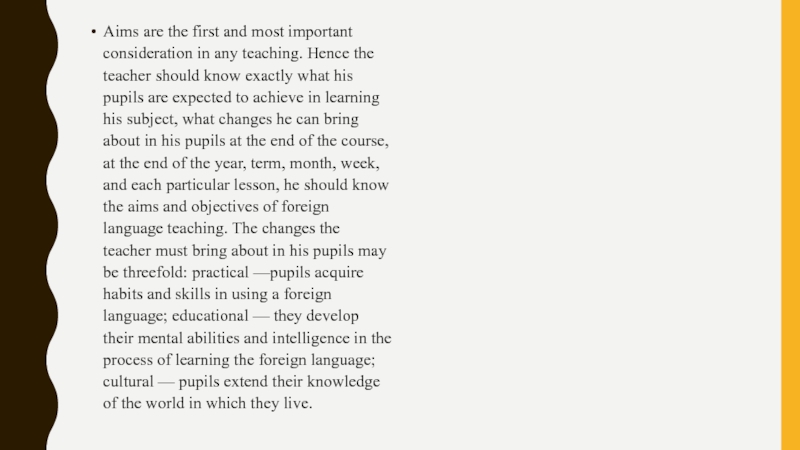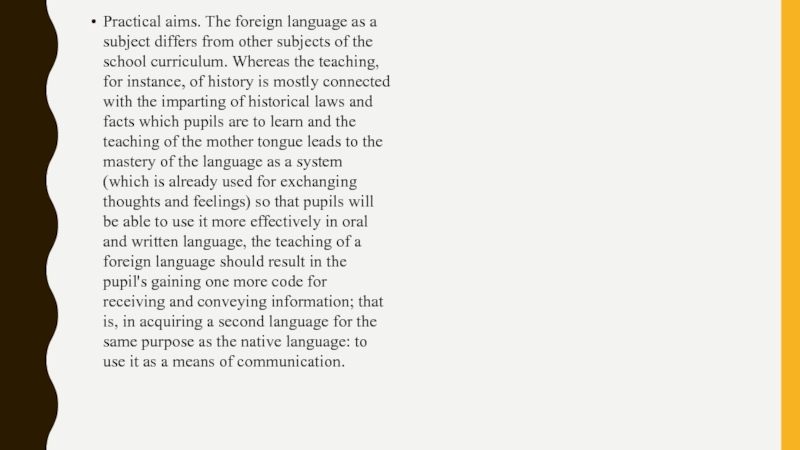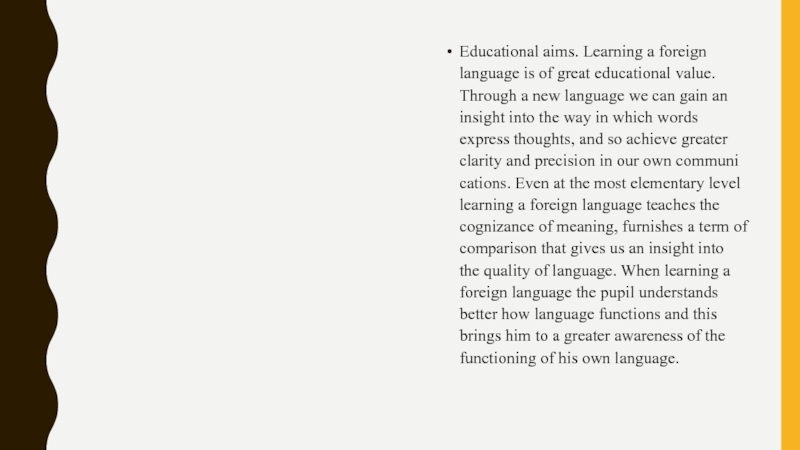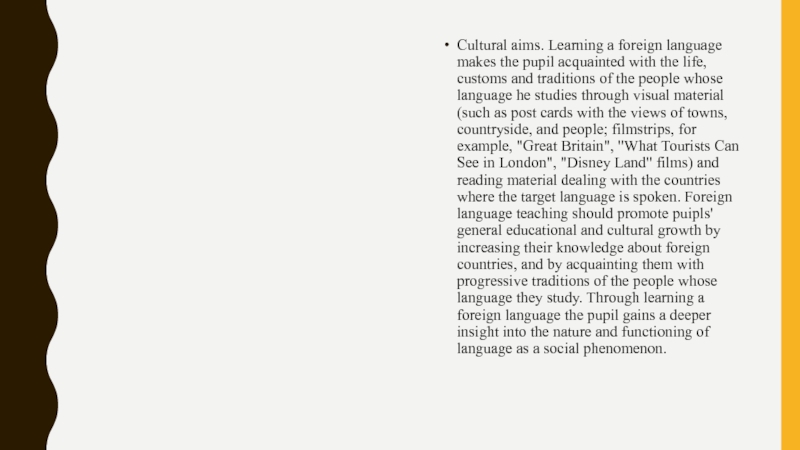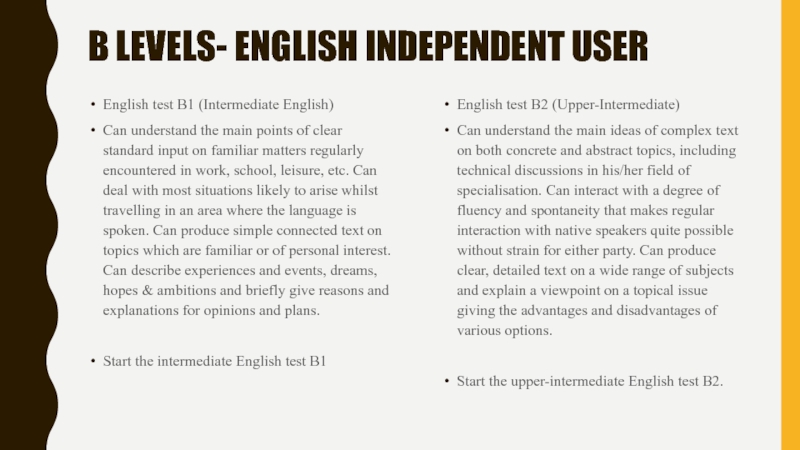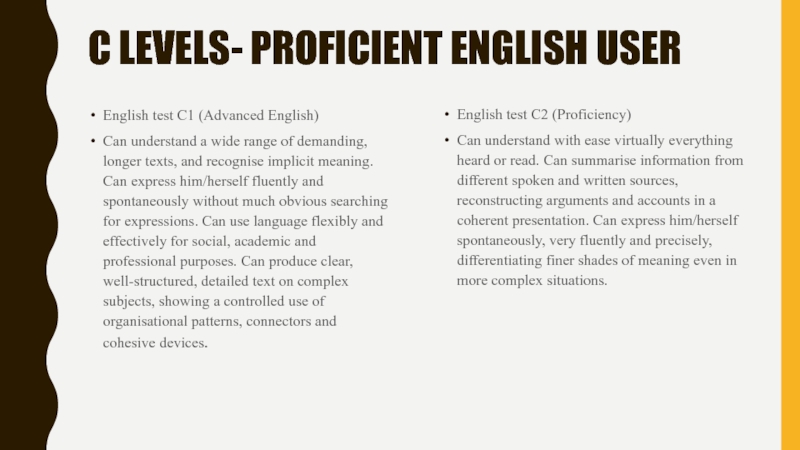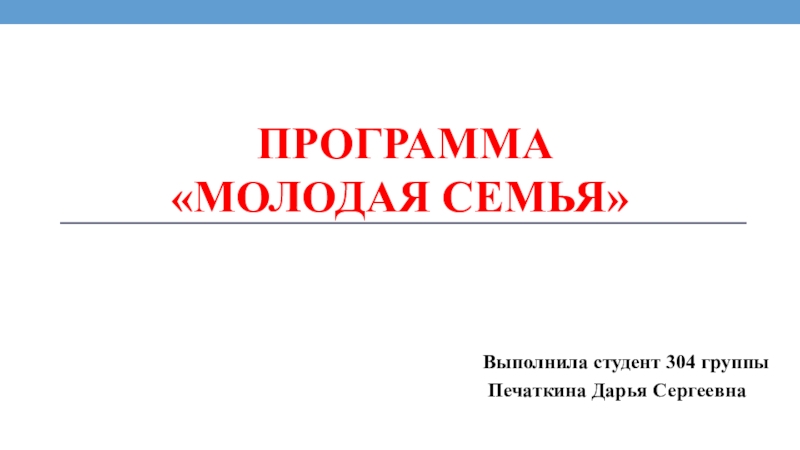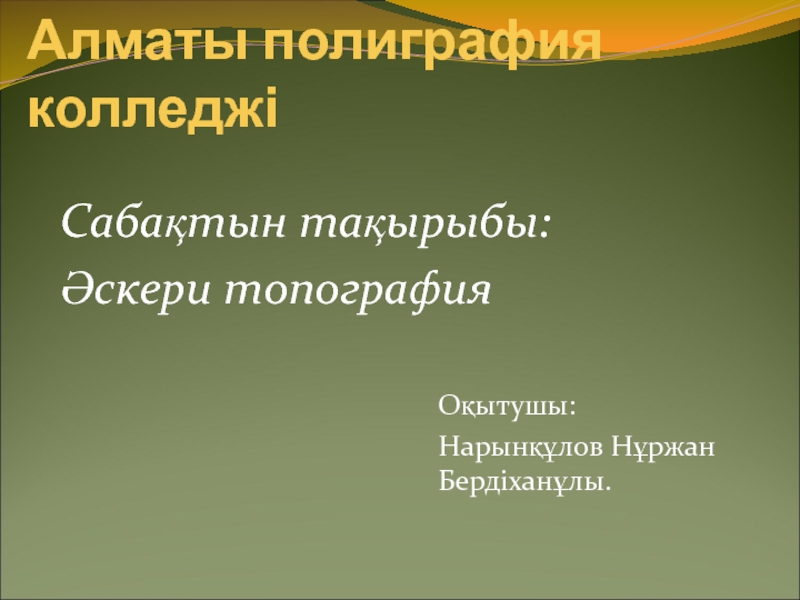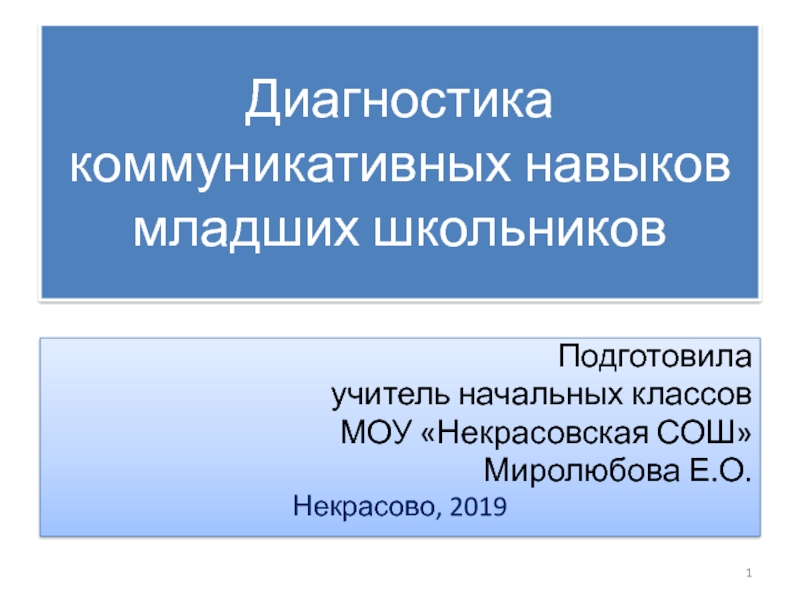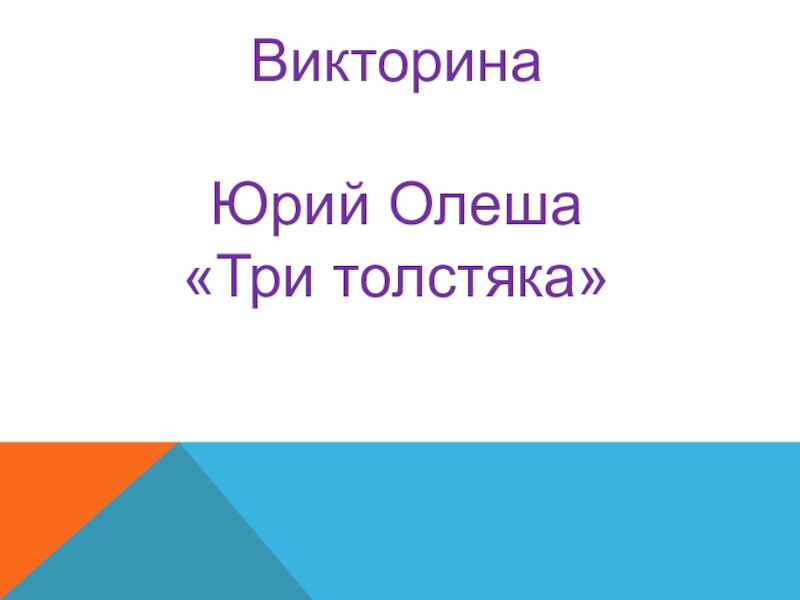Разделы презентаций
- Разное
- Английский язык
- Астрономия
- Алгебра
- Биология
- География
- Геометрия
- Детские презентации
- Информатика
- История
- Литература
- Математика
- Медицина
- Менеджмент
- Музыка
- МХК
- Немецкий язык
- ОБЖ
- Обществознание
- Окружающий мир
- Педагогика
- Русский язык
- Технология
- Физика
- Философия
- Химия
- Шаблоны, картинки для презентаций
- Экология
- Экономика
- Юриспруденция
Aim and result of fle in basic school
Содержание
- 1. Aim and result of fle in basic school
- 2. The aim of fle in basic school
- 3. Icc as the final goalSubcompetences(Kunanbayeva S.S.)
- 4. Aims are the first and most important
- 5. Practical aims. The foreign language as a
- 6. Educational aims. Learning a foreign language is
- 7. Cultural aims. Learning a foreign language makes
- 8. A levels- English Basic UserEnglish test A1
- 9. B levels- English Independent UserEnglish test B1
- 10. C levels- Proficient English UserEnglish test C1
- 11. Скачать презентанцию
Слайды и текст этой презентации
Слайд 5Practical aims. The foreign language as a subject differs from
other subjects of the school curriculum. Whereas the teaching, for
instance, of history is mostly connected with the imparting of historical laws and facts which pupils are to learn and the teaching of the mother tongue leads to the mastery of the language as a system (which is already used for exchanging thoughts and feelings) so that pupils will be able to use it more effectively in oral and written language, the teaching of a foreign language should result in the pupil's gaining one more code for receiving and conveying information; that is, in acquiring a second language for the same purpose as the native language: to use it as a means of communication.Слайд 6Educational aims. Learning a foreign language is of great educational
value. Through a new language we can gain an insight
into the way in which words express thoughts, and so achieve greater clarity and precision in our own communications. Even at the most elementary level learning a foreign language teaches the cognizance of meaning, furnishes a term of comparison that gives us an insight into the quality of language. When learning a foreign language the pupil understands better how language functions and this brings him to a greater awareness of the functioning of his own language.Слайд 7Cultural aims. Learning a foreign language makes the pupil acquainted
with the life, customs and traditions of the people whose
language he studies through visual material (such as post cards with the views of towns, countryside, and people; filmstrips, for example, "Great Britain", "What Tourists Can See in London", "Disney Land" films) and reading material dealing with the countries where the target language is spoken. Foreign language teaching should promote puipls' general educational and cultural growth by increasing their knowledge about foreign countries, and by acquainting them with progressive traditions of the people whose language they study. Through learning a foreign language the pupil gains a deeper insight into the nature and functioning of language as a social phenomenon.Слайд 8A levels- English Basic User
English test A1 (Beginner)
Can understand and
use familiar everyday expressions and very basic phrases aimed at
the satisfaction of needs of a concrete type. Can introduce him/herself and others and can ask and answer questions about personal details such as where he/she lives, people he/she knows and things he/she has. Can interact in a simple way provided the other person talks slowly and clearly and is prepared to help.Start the free English beginner test A1.
Similar to Cambridge BULATS score 10-19, Young Learners English (YLE) Movers.
English test A2 (Elementary English)
Can understand sentences and frequently used expressions related to areas of most immediate relevance (e.g. very basic personal and family information, shopping, local geography, employment). Can communicate in simple and routine tasks requiring a simple and direct exchange of information on familiar and routine matters. Can describe in simple terms aspects of his/her background, immediate environment and matters in areas of immediate need.
Start the elementary English test A2.
Similar to Cambridge KEY (KET) certificate, BULATS score 20-39, CLB/CELPIP 4, YLE Flyers.
Слайд 9B levels- English Independent User
English test B1 (Intermediate English)
Can understand
the main points of clear standard input on familiar matters
regularly encountered in work, school, leisure, etc. Can deal with most situations likely to arise whilst travelling in an area where the language is spoken. Can produce simple connected text on topics which are familiar or of personal interest. Can describe experiences and events, dreams, hopes & ambitions and briefly give reasons and explanations for opinions and plans.Start the intermediate English test B1
English test B2 (Upper-Intermediate)
Can understand the main ideas of complex text on both concrete and abstract topics, including technical discussions in his/her field of specialisation. Can interact with a degree of fluency and spontaneity that makes regular interaction with native speakers quite possible without strain for either party. Can produce clear, detailed text on a wide range of subjects and explain a viewpoint on a topical issue giving the advantages and disadvantages of various options.
Start the upper-intermediate English test B2.
Слайд 10C levels- Proficient English User
English test C1 (Advanced English)
Can understand
a wide range of demanding, longer texts, and recognise implicit
meaning. Can express him/herself fluently and spontaneously without much obvious searching for expressions. Can use language flexibly and effectively for social, academic and professional purposes. Can produce clear, well-structured, detailed text on complex subjects, showing a controlled use of organisational patterns, connectors and cohesive devices.English test C2 (Proficiency)
Can understand with ease virtually everything heard or read. Can summarise information from different spoken and written sources, reconstructing arguments and accounts in a coherent presentation. Can express him/herself spontaneously, very fluently and precisely, differentiating finer shades of meaning even in more complex situations.
